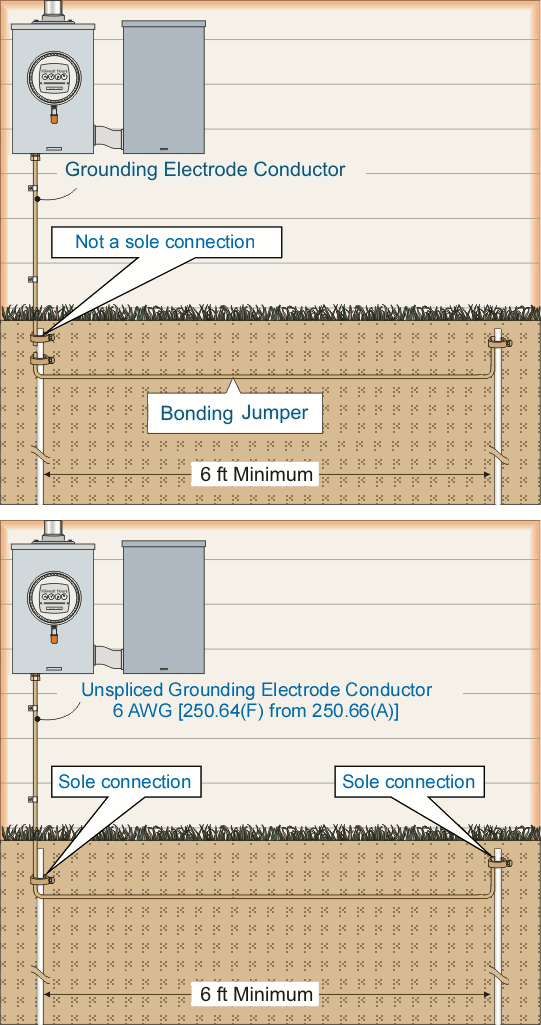I agree that the citation of 250.66(A) was improperly used in the Mike Holt slide for the 2005 code. In actuality, the proper citation would have been 250.53(E) when discussing the proper size bonding jumper between rods. (Same for 2008)
250.53(E) only applies to rpp-type supplemental electrodes. Supplemental electrodes only exist if there is a water pipe electrode - ref: 250.53(D)(2). If the supplemental electrode conductors are connected per the last part of 250.53(D)(2), the conductor would be a GEC and not a bonding jumper. 250.53(E) applies to rpp-type supplemental electrode that are bonded to the water pipe electrode... and the connecting conductor would be a bonding jumper.Using 'others' logic 250.53(E) does not apply. Note the word "sole".
Edit. Also it is not a supplemental electrode.
The rods in the illustration could be supplemental electrodes, but they are not bonded to a water pipe electrode, so the conductor from the meter enclosure to the first rod is a GEC.
If the first rod was connected directly to a water pipe electrode, it would not be the sole connection to the rod electrode, so must be sized per table. The connecting conductor between rods would still be a bonding jumper, but it is also not connected to a metal water pipe electrode, so it too must be sized per table.
Again, I emphasize the above are literal interpretations only.


